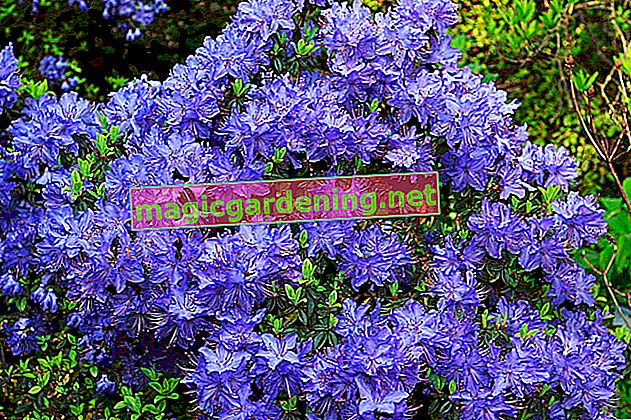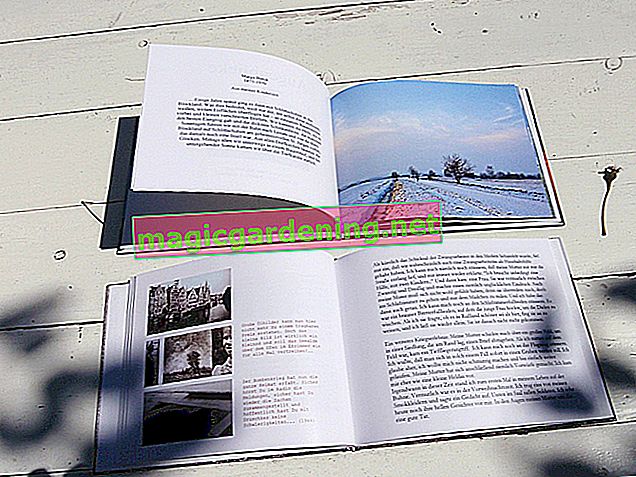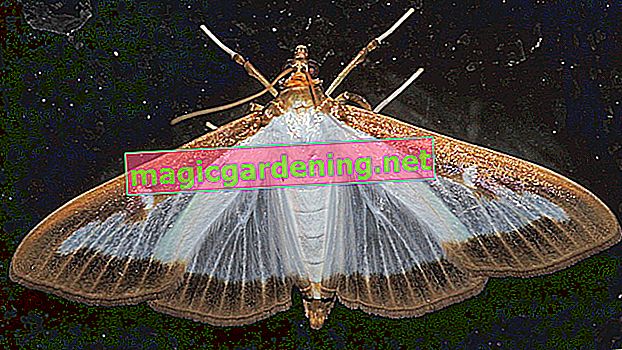
origin
The most common species of the linden tree, the Sparrmannia africana, already reveals it: the plant originally comes from the African continent. Its German name “Kapländische Zimmerlinde” also suggests it.
also read
- Help, my linden tree is getting yellow leaves!
- Help, my room linden is getting brown leaves!
- Is the linden tree poisonous?
It was discovered in the 18th century by the Swedish doctor and botanist Anders Sparrmann and introduced to Europe. His name is immortalized in the botanical name of the plant. Later it was Carl von Linné junior, the son of the famous Swedish botanist and naturalist of the same name, who described and established the genus.
As a plant of the African south, the room linden is adapted to a light, moderately moist and comparatively cool habitat. Unlike many other houseplants from Africa that are cultivated in this country, their original environment is not tropical. A year-round room culture can be achieved without any problems.
Origin in keywords:
- Linden tree comes from South Africa
- Original habitat rather cool, moderately humid and bright
- Discovered and introduced to Europe by Anders Sparrmann
- Described by Carl von Linné jr.
growth
The habitus of the Sparrmannia, which belongs to the mallow family, is bushy to tree-like. With its widely branching shoots it forms a very protruding crown over a more or less pronounced trunk. In their home, the linden tree can be up to 7 m high, in the local room culture it is more likely to be content with a maximum of 3 meters, due to the lower light supply and the frequently required cut.
Overview of growth characteristics:
- Shrub to tree-like habit
- Develops widely branched, sweeping crown
- Can be up to 7 m high in the original habitat, here only 3 m
leaves
The leaves of the Sparrmannia are the main factor behind their German trivial name “Zimmerlinde”. Because with their large, heart-shaped appearance and their light green color, they are actually clearly reminiscent of the leaves of real linden trees.
But if you look closely, you will see a few differences: First of all, at an advanced age, the leaf contour is characterized by angular bulges on the front edge - such a shape does not show any type of linden. In addition, due to their slightly raised veins, the surface texture of the linden tree is more wavy, not as fine and smooth as linden leaves. But they still have a delicate consistency and they are densely hairy.
The leaf margins are dentate. Overall, the leaves can reach an impressive length and width of up to 20 centimeters. The stems are also about as long.
Blade properties in brief:
- Heart-shaped, large-area shape is reminiscent of linden leaves
- With pointed, anterior bulges in old age
- Light green color
- Slightly wavy surface texture, densely hairy
- Up to 20 cm long and wide
blossoms
If you generally cultivate the room linden tree in a cool place and do not prune it back in spring, you can look forward to very pretty flowers over the winter and spring months. They show themselves with delicate, white petals and a large, yolk-yellow and rust-brown colored bush of many, long stamens. The individual flowers, which stand up when they open, stand together in large umbels.
Overview of flower properties:
- Show up more with cool cultivation and moderate pruning
- Large, pretty appearance with white petals and yolk-yellow-brown tufts of stamens
- Stand together in large umbels
When is the flowering time?
The single flowers of the room linden tree have a relatively short residence time - the entire flowering period is all the longer. At least from November to May, new flowers can always open on the umbels. By consistently cutting them off after they have bloomed, you can stimulate their regeneration. With permanently cool cultivation, the room linden tree can also bloom all year round.
To note:
- Flowering time of the single flowers only briefly
- Overall long flowering period: from November to May or all year round
fruit
If you maintain a frequent exchange of air between inside and outside in your home, and if enough insects are able to visit your linden tree, the chance of pollination of the flowers is higher. However, aiming for fruit formation is particularly useful if you are planning to propagate using your own seeds.
The fruits have a capsule-like shape and are enclosed in a prickly shell, which is actually used for stripping and further transport by animals.
Which location is suitable?
According to its home on the South African coast, the Sparrmannia prefers a comparatively cool and airy location for indoor plants. She prefers 15 to 18 ° C - if you always like to be cozy and warm at home, you may get a little in a mess here. However, in order not to have to do without the imposing ornamental foliage plant in this case, a location in the stairwell can also be considered.
Sparrmannia would like a lot of light, but not in direct sunlight. So, standing on an east or west facing window sill, shade it with other plants or a light fabric if possible.
In summer you can also put the linden tree outside.
The humidity should be relatively high.
Site requirements at a glance:
- Bright, but without direct sunlight
- Rather cool: 15-18 ° C
- Fairly high humidity
What soil does the plant need?
The nutritional requirement of the Sparrmannia is medium. It is best to put them in a mixture of normal potting soil and a small amount of ripe compost and / or a handful of horn shavings. (€ 6.39 at Amazon *) A little loosening up with sand is also recommended.
It is also possible to keep it in hydroponics with a soilless substrate made of expanded clay (€ 17.50 at Amazon *) and a permanent water-nutrient foot bath. This variant can be a solution especially for offices or for people who are irregularly at home.
Watering the linden tree
When it comes to water, the room linden tree needs a lot of attention. Those who do not want to keep watering are well advised to use hydroponics. You need to provide them with plenty of water, especially during the main vegetation phase over the spring and summer months. Nevertheless, waterlogging should be avoided - so make sure that the substrate bale is always well dried before watering and that no water remains permanently in the saucer. The humidity-loving room linden tree is by no means averse to an occasional shower from the water disperser.
In winter, reduce the watering a little.
To note:
- Room linden tree relatively thirsty
- Needs regular, abundant watering
- Nevertheless avoid waterlogging
- Spraying is good for her
- Water less in winter
Fertilize the linden tree properly
Due to its considerable nutritional requirements, it does not harm to fertilize the linden tree regularly during the growth phase. Simply use a universal liquid fertilizer that you add to the irrigation water every two weeks. When potting, the substrate should be enriched with organic permanent fertilizer in the form of compost and horn shavings.
In the winter break, reduce the additional fertilizer application to a maximum of once every three weeks or stop it entirely.
Fertilizer recommendations in brief:
- Regular fertilization of the linden tree makes sense due to its relatively high nutrient requirement
- Liquid fertilizer application every 2 weeks in summer and autumn
- Permanent nutrient supply through compost / horn shavings in the substrate
- In winter, fertilize every 3 weeks or not at all
Cut the linden tree correctly
The sprawling sparrmannia needs regular pruning if it is not to take up the whole room in the long run. However, it is not overly cut compatible. For this reason alone, it is advisable to wait until the plant has reached a lush size and width before trimming, instead of shortening it regularly. Also because it blooms much more profusely if it is not constantly disturbed by pruning, you should refrain from shortening the shoots every year.
The rule is: radical pruning, if it has to be for reasons of space, otherwise only cut off bloomed flowers. The radical pruning should be done in winter.
Continue reading
Overwinter
The Sparrmannia can basically be in the same location all year round, provided that the circumstances are as appropriate to the species as possible. That means: quite cool, below living standard, as bright as possible without direct sun and good humidity.
The winter months tend to require a few changes in care. So you should noticeably reduce both watering and fertilizing.
Continue reading
Propagate room linden
The easiest way to propagate a linden tree is by cuttings. But sowing is also possible.
Cuttings
With this method, cut off head cuttings about 15 centimeters in length from the upper crown area. You liberate the lower area from leaves. You can root the cuttings simply in water or in a growing substrate (9.05 € at Amazon *) made of peat and sand, which you then have to keep moist regularly. You should set up the cuttings in a warm, bright place protected from direct sunlight.
Seed cultivation
Alternatively, you can grow a linden tree from seeds. If your mother plant has developed fruits, you can use your own seeds, but some are also available from specialist shops. The seeds are first soaked in water for at least 6 hours before placing them in planters with potting soil and covering them with some sand. It is best to cover the planters with foil to ensure a uniformly moist and protected microclimate. The seeds need a lot of light and warmth for germination, around 25 ° C is ideal.
The seedlings should show up after about two weeks. Then lift the foil to give the young plants some air and pull them to a size of about 5 centimeters. Then they can be pricked.
Continue reading
Offshoot
See section “Propagating - Cuttings”.
Continue reading
Diseases
Fortunately, the linden tree is not often affected by diseases and pests. Rather, care errors are responsible for any weaknesses such as a location that is too dark or waterlogging. In the latter case, root rot or mold can develop, which the plant indicates with yellow and falling leaves. In this case, the root ball must be cleaned thoroughly and placed in a fresh substrate.
Continue reading
Pests
The linden tree does not want to be too warm and dry. Of course, that can happen in a heated room. In this case, it becomes more susceptible to known heat- and drought-loving pests such as the whitefly and scale or mealybugs.
The best way to deal with a whitefly infestation is through sticky yellow tablets. It is best to fight scale and mealybugs first by mechanical wiping and a subsequent spray cure from a mixture of alcohol, curd soap and water.
tip
Because of its sprawling growth, it is advisable to put the linden tree in a large clay planter. In this way you ensure sufficient stability. Plus, you don't need to repot as often.
sorts
Of the total of around 7 different species of the genus Sparrmannia, only Sparrmannia africana, the Cape linden tree, is actually relevant in this country. A few varieties of cultivars have emerged from this species, which differ quite a bit in their appearance. So you have a selection that is not overly abundant in number, but quite varied. The most famous varieties are the S. a. Variegata, the S. a. Flore Pleno and the S. a. Nana.
Sparrmannia africana Variegata
The special feature of this variety is the whitish variegation of the leaves. It appears in a rather irregular structure on the pronounced veined foliage, which will certainly be less appealing to those who love symmetry. Fans of extraordinary leaf decoration phenomena are even more so. The leaves have a heart shape that is at least three, if not five times, pointed - in the latter case their contour is almost more reminiscent of maple leaves than of linden leaves.
Depending on the coolness of the location, the variety can show its white flowers with a yellow-reddish-brown center all year round.
Overall, the S. a. Variegata up to about 3.50 m high and grows very bushy.
Sparrmannia africana Flore Pleno
The name of this variety already reveals what is so special about it: The flowers are double and usually appear in the spring and summer months in large, delicately structured, feathery hemispheres with numerous white petals that merge into yolk yellow and old pink in the center. This makes it the most magnificent of the room linden varieties.
Its foliage leaves the stage for the lush flowers and shows itself in a simple, light matt green and with a contour that is bulged in several points. Their veins are a little more delicate than in the S. a. Variegata, at an advanced age and when they reach a certain size, can easily overhang the stem.
The S. a. In contrast to her fellow varieties, Flore Pleno wants to be in the sun. The fast-growing plant can reach 3 or 4 m in height and 2 to 4 m in width.
Sparrmannia africana Nana
The S. a. Nana is a dwarf variety. It is therefore particularly suitable for room linden fans who do not want to carry out any radical pruning in order to be able to keep the plant permanently in the room. The unfilled flowers are white and can appear all year round.








